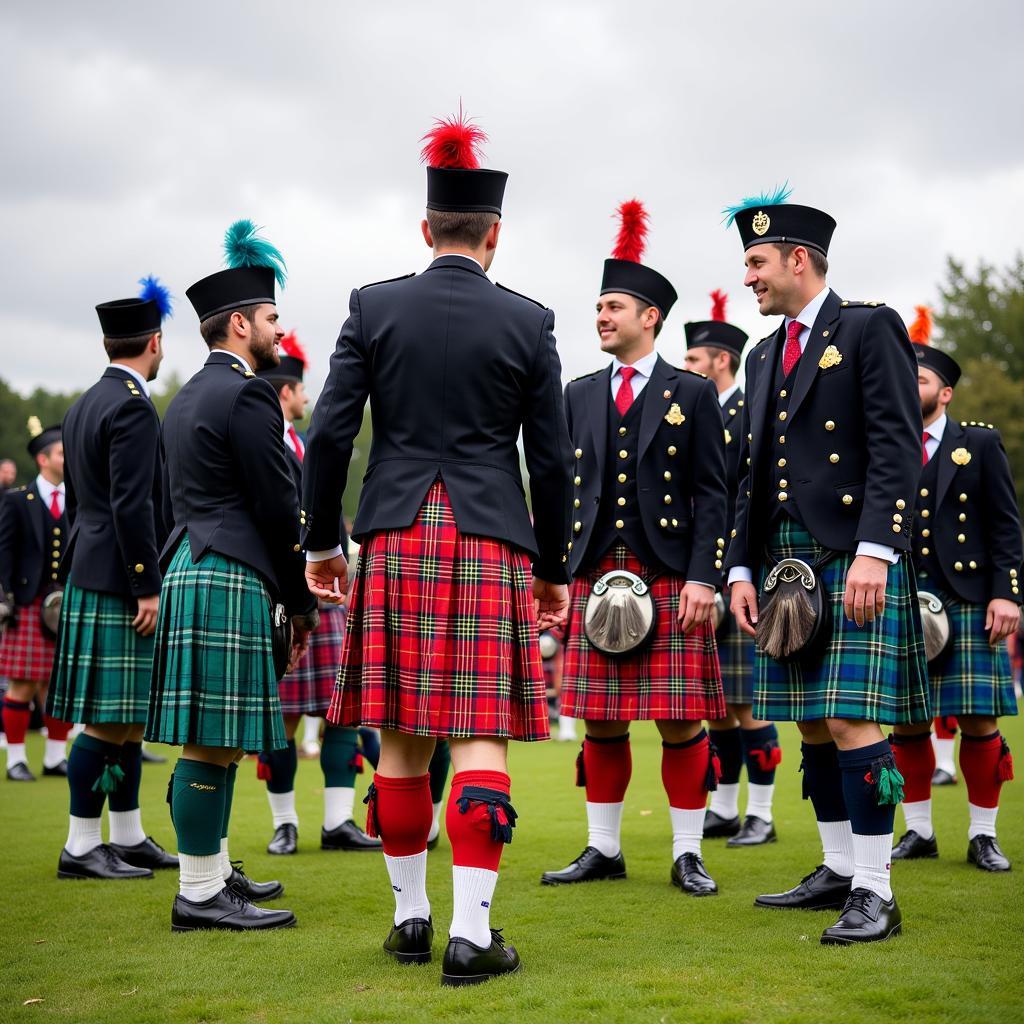The Prince Charlie Kilt, often referred to simply as the “Prince Charlie,” is a distinguished garment deeply rooted in Scottish tradition and history.  Prince Charlie Kilt: Traditional Scottish Attire More than just a piece of clothing, it embodies national pride, cultural identity, and a connection to Scotland’s rich heritage.
Prince Charlie Kilt: Traditional Scottish Attire More than just a piece of clothing, it embodies national pride, cultural identity, and a connection to Scotland’s rich heritage.
The History and Origins of the Prince Charlie Kilt
The Prince Charlie kilt traces its origins back to the Jacobite era, a turbulent period in Scottish history marked by uprisings aimed at restoring the Stuart monarchy to the British throne. The kilt takes its name from Charles Edward Stuart, widely known as Bonnie Prince Charlie, who led the Jacobite rising of 1745.
Contrary to popular belief, the Prince Charlie kilt, as we know it today, wasn’t actually worn by Prince Charles Edward Stuart himself. The garment he donned during the Jacobite uprising was likely a full-length belted plaid, a precursor to the modern kilt. The Prince Charlie kilt, with its distinctive shorter jacket and formal aesthetic, evolved later in the 19th century as a symbol of Scottish romanticism and nostalgia for the Jacobite cause.
Distinguishing Features of the Prince Charlie Kilt
What sets the Prince Charlie kilt apart from other types of kilts is its formal nature and elegant silhouette. While other kilts can be worn casually, the Prince Charlie kilt is reserved for special occasions, such as weddings, formal dinners, Highland games, and other celebrations of Scottish culture.
Key Components of a Prince Charlie Outfit:
- Kilt: Made from tartan fabric, pleated and wrapped around the waist, with the pleats at the back.
- Prince Charlie Jacket: A short, fitted jacket, usually black, with tails at the back.
 Prince Charlie Jacket: Details and Design
Prince Charlie Jacket: Details and Design - Waistcoat: A vest worn under the jacket, often in a contrasting tartan or a solid color.
- Sporran: A pouch worn on a chain or leather strap, hanging in front of the kilt, serving both a decorative and practical purpose.
- Ghillie Brogues: Leather shoes with long laces, often decorated with punched patterns.
- Kilt Pin: A decorative pin worn on the front apron of the kilt, adding a touch of personal style.
- Sgian-dubh: A small, single-edged knife traditionally worn tucked into the top of the right sock.
The Prince Charlie Kilt: A Timeless Symbol of Scottish Pride
The Prince Charlie kilt holds a special place in the hearts of many Scots, embodying their history, culture, and national identity. It’s a powerful symbol of their enduring spirit and their connection to their ancestors.
“The Prince Charlie kilt is more than just a garment,” says Dr. Fiona Macleod, a Scottish historian. “It represents a connection to our past, a celebration of our heritage, and a testament to the enduring spirit of the Scottish people.”  Wearing the Prince Charlie Kilt with Pride
Wearing the Prince Charlie Kilt with Pride
Conclusion:
The Prince Charlie kilt, steeped in history and tradition, remains an enduring symbol of Scottish pride. Its elegant design, combined with its association with Scottish heritage, makes it a popular choice for formal events and celebrations. Wearing a Prince Charlie kilt is not merely about donning an outfit; it’s about embracing a cultural legacy and celebrating the indomitable spirit of Scotland.
FAQs
1. What is the difference between a kilt and a Prince Charlie kilt?
While all Prince Charlie outfits include a kilt, not all kilts are part of a Prince Charlie outfit. The Prince Charlie kilt specifically refers to the full formal attire, including the distinctive jacket, sporran, and accessories.
2. Can anyone wear a Prince Charlie kilt?
Although traditionally worn by men, the Prince Charlie kilt is increasingly being embraced by individuals of all genders who wish to celebrate Scottish heritage.
3. Where can I purchase a Prince Charlie kilt?
Authentic Prince Charlie kilts can be purchased from specialized kilt makers in Scotland and around the world.
4. Is it appropriate to wear a Prince Charlie kilt to a wedding?
Yes, the Prince Charlie kilt is considered highly appropriate attire for weddings and other formal events.
5. What is the significance of the tartan pattern on a Prince Charlie kilt?
Tartan patterns often represent specific Scottish clans or families, adding a personal and historical dimension to the garment.
For further assistance, please contact us at:
Phone: 0909802228
Email: doibongda@gmail.com
Address: 101 Đ. Lý Chiêu Hoàng, Phường 10, Quận 6, Hồ Chí Minh, Việt Nam.
Our customer service team is available 24/7 to assist you.